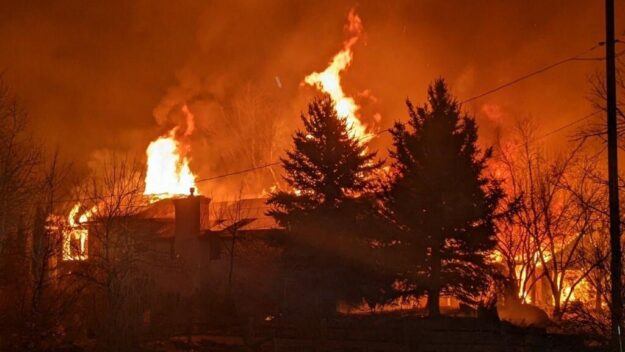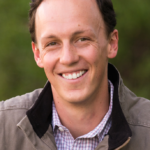Widgetized Section
Go to Admin » Appearance » Widgets » and move Gabfire Widget: Social into that MastheadOverlay zone
Housing crisis, real estate inequity fans flames of labor shortage, wildfires

“We are here today because we are tired,” Dr. Martin Luther King, Jr. said in Chicago in 1966. “We are tired of paying more for less.”
King was addressing housing inequality – a campaign he embarked upon late in his life that culminated in the Fair Housing Act of 1968 following his assassination that same year. But he could have been talking about Vail and Eagle County in 2022.
Most of the labor shortage issues impacting local businesses, including one of the most popular ski areas in the nation, stem from an acute housing shortage and chronically low wages.
In the wealthy, mostly white resort communities of the Eagle River Valley, the kind of segregation and race-based exclusion King was fighting in Chicago is not as overt. But it exists here.

And it comes in several different forms. In a place where high-end real estate is king, more dense, multi-family housing projects for workers and local professionals are often thwarted on the basis of environmental, traffic or property value concerns.
But these are all code for NIMBYism (Not in My Backyard) that itself is just a form of exclusion based on socioeconomic status. Those of us wealthy enough to live or own a vacation home here generally support workforce and attainable local’s housing (we like chairlift operators, firefighters, teachers, construction and restaurant workers), until that housing is being built nearby.
NIMBYism aside, however, the height of hypocrisy is shutting down housing projects for dubious environmental reasons.
We’ve seen that recently in Vail with Vail Resorts’ Booth Heights project, which neighbors apparently thwarted due to a dwindling bighorn sheep herd in the area. But while the sheep herd had been in decline for decades, those neighbors had never pushed for habitat enhancement on surrounding public lands, instead objecting to deadfall thinning and prescribed burns.
Then when workforce housing was proposed right along the frontage road and Interstate 70, with great public transportation access, there was a sudden groundswell of support for the sheep. A substitute housing project is in the works closer to town – and that’s good – but Vail Resorts had approval and never turned dirt. And one could argue now, given the growing housing-labor crisis, both projects are badly needed.
Some would say the ship has sailed on workforce and attainable housing in Vail, so why bother – and a year-round residency percentage of around 15% would seem to support that notion – but one of the biggest fallacies of fighting close-in housing projects for environmental reasons is the reality that close-in, walkable housing near where people work gets cars off the roads. And transportation is quickly becoming the largest source of greenhouse gas emissions killing off our local wildlife and making us so incredibly vulnerable to devastating wildfires.
There is the argument against taxpayers subsidizing or even incentivizing housing projects that benefit businesses, especially multi-national corporate behemoths reaping record profits and stock dividends running resorts on public lands. But in a place where our primary industry is real estate, with outdoor recreation serving as a homeowner amenity, failure to publicly subsidize local’s housing will eventually lead to no local’s housing, as short-term rentals and second homes proliferate.
Meanwhile, I’m dismayed but not surprised that some of the most vocal opponents of workforce or even affordable local’s housing projects are often realtors. They object because of the potential for lowered property values in the immediate vicinity, and because they would rather see private land developed with higher-end product for them to sell.
Environmentally speaking, however, higher-end product rising up from the valley floor into the wildland urban interface (WUI) causes the most damage – degrading wildlife habitat and placing more pressure on emergency services, water and power infrastructure and requiring more workers for everything from landscaping to construction to fire and police.
Some of the same realtors and homeowners who’ve done well on projects from Eagle Ranch to Cordillera to Arrowhead to Spraddle Creek to Mountain Star to Lake Creek are some of the loudest voices objecting to projects where lower-income workers can live along the main transportation corridors on the valley floor. They say they fear traffic and urban density.
However, those homes on high are often the most vulnerable to more frequent and intense wildfires as carbon emissions cause the planet to warm.
“We’re seeing measurable changes like warmer temperatures, earlier runoff, and shockingly, a month fewer days with frost since a hundred years ago,” Auden Schendler, senior vice president of sustainability at Aspen Skiing Company, says in a story on diminished snowpack that I wrote for Vail Valley Magazine (page 154). “And I had always thought about climate and skiing as a heat and lack of snow problem, but in the last few summers I watched my hometown almost burn down, and then I-70 burn and close, and this summer you saw Sierra resorts turning snow guns on in the summer to prevent incineration. If you look at the forests around us, they are dry and widely dying. So, to me, the presenting threat is fire, and the consequence of fire is not just that you might burn down, but if you survive, you then have mudslides, river and fishery destruction, invasive weed infestation … and I think those changes we’re seeing in real time are going to get us before it’s too hot to ski.”
Schendler made those comments before last month’s rare winter wildfires raced through the suburbs of bone-dry Boulder, incinerating more than 1,000 homes there – a “new-normal” catastrophe made possible by the seven hottest years in recorded human history being the last seven years. And a scenario the Vail fire chief recently told the Vail Daily was quite possible here.
I quoted University of Colorado hydrologist Keith Musselman in the Vail Valley Magazine piece, and then he weighed in during the breaking Associated Press coverage of the Marshall Fire near his home.
“As snowpack melts out earlier in response to warming and/or drought, streamflow and soil moisture will follow suit, setting the stage for more arid conditions that are prone to more frequent and larger wildfires,” Musselman told me for the magazine (page 154). In other words, the impacts of climate change on the ski industry that brought many of us here in the first place may ultimately pale in comparison to what we’re doing to our own high-country habitat.
While he weighed in on other topics, for reasons of space, the following statement on housing from Paul Chinowsky, director of the Program in Environmental Design at the University of Colorado, did not make it into the magazine:
“Absolutely this is a real estate economy,” Chinowsky said of Colorado. “And I am going to take a somewhat controversial stand here – people buy and build these houses and retreats because they are insured and they know that the state will use its resources to protect them. Frankly, I would start charging a significant tax on these properties to defend them and then charge them if there is a wildfire to protect them. Further, it should be very difficult to insure these properties. We cannot criticize these properties if we enable them and there is no consequence. Right now. if you can afford the real estate, then you will build with little concern going forward. There needs to be concerns and consequences, otherwise it will just get more severe with more pictures of houses burning.”
Finally, I interviewed Democratic state Rep. Dylan Roberts of Avon for the Vail Valley Magazine story last fall but could not get his comments into the piece. Here’s an edited email Q&A with the prosecutor and lawmaker who’s now running for the wider Colorado Senate District 8 that includes Eagle County and the northwestern corner of the state.

RV: Your current House district includes Eagle County, where you live now, and Routt County, where you grew up. In running for SD8 in 2022, you’ll have to appeal to voters in a larger and, in some places, more conservative area of the state. How will you do that?
DR: I am proud of my bipartisan track record of achieving results at the Capitol on some of the most pressing issues for Colorado’s mountain and rural communities, including lowering the cost of health care, promoting rural economic development, protecting our water resources, investing in wildfire mitigation and prevention, and leading significant progress on affordable housing.
RV: To actually ask an environmental question that’s relevant to the area you hope to represent, is its future as an outdoor recreation and tourism destination in serious trouble if we don’t move rapidly away from its past as a hub of mining, oil, gas and coal production? What does that transition look like for towns like Craig and Hayden?
DR: The transition from an economy based solely on mining and oil and gas production will not happen overnight but it is happening quickly so it is encouraging to see towns like Hayden and Craig being proactive about their economic diversification. Those communities have some dynamic leaders like Hayden’s Town Manager and Craig’s Chamber of Commerce, for example, that have been working on economic diversification for years with a focus on housing, outdoor recreation, and attracting new businesses to their towns. Transition should also include finding ways to emphasize the skills that energy workers have and combine it with everyone’s desire to stay in the communities they call home. For example, Xcel is pursuing an innovative energy production project that, thanks to a bipartisan bill I passed last year, will be moving forward in Hayden using Hayden-based employees, rather than elsewhere in the state. We also need to capitalize on their existing assets like the Hayden Airport, Moffat County’s beautiful public lands and rivers, and the lower cost of living in those communities (relative to neighboring ski towns), to attract new industries like manufacturing, outdoor recreation, and much more. A successful transition will happen if all sectors can work together and remain forward-thinking; we have done a lot at the state level from creating and substantially funding the Office of Just Transition, passing my bills like the Rural Jumpstart Small Business Incentive and the Innovative Technologies in Transitioning Communities bill, and we have seen fruitful partnership with local government, nonprofits, and the private sector. There is definitely a roadmap to do this successfully if we can remain focused and supportive of that.
RV: As someone who lives in Avon and grew up in Steamboat and is no doubt an avid snow rider and mountain enthusiast, can you share with me some of your own anecdotal evidence of just how climate change is shrinking our snowpack, diminishing our stream flows and generally causing increased aridification?
DR: Of course the diminished snowfall in the winter is a bummer for less powder days and not as good of skiing, but I personally feel the impacts of climate change the most in the summer. As a kid, I grew up on the Yampa River through Steamboat, tubing and fishing on it well into August every summer. Now, recreation of all kinds is shut down on the Yampa so early in the summer due to decreased river flow and rising water temperature. And then you drive west into Hayden and then Moffat County and can see the drought in the brown of the dry landscape and the trickling streams and rivers. Combine that with the increased wildfire that we have seen from Eagle County to Grand County and everywhere in between, the seriousness of this crisis really seems to hit you in the summer.
RV: What are the three or four most urgent steps the state government can take to help mountain towns either adapt to or reverse the worst effects of climate change?
DR: First, the state government can do more to encourage and promote water conservation, which I think will be the most direct impact we feel from climate change on the Colorado Western Slope over the next decade. We need to protect our state’s right to our water and make sure that we do not face curtailment due to downstream demands from California, Arizona, and others. We can do this by further investing in our state’s water plan, promoting conservation measures in agriculture, municipal use, and residential use, among other efforts that I will continue to champion at the legislature. Second, modernizing our transportation and electric infrastructure is a key element in combating climate change on the state level. We made significant progress on this with the passage of SB21-260 last year, but we should do more. Third, our state needs to continue to take the threat of drought and wildfire seriously. This will require continued investment in wildfire mitigation and prevention as well as efforts to keep our watersheds and forests healthy.
Editor’s note: If you’re interested in more of this kind of reporting on issues of race, equity and the environment, please consider a funding contribution to RealVail.com.
David O. Williams
Latest posts by David O. Williams (see all)
- ‘Now we have to look at that’, Colorado AG Weiser says of challenging Trump’s energy emergency - July 8, 2025
- Neguse, Bennet call for halt to BLM emergency rule aimed at increasing Utah oil-train traffic - June 23, 2025
- The O. Zone: Trump’s long list of broken campaign promises just jumped to yet another forever war - June 23, 2025



Norm Mckinney
January 19, 2022 at 10:33 am
Let the free market balance it out. When businesses can’t get enough employees they will raise wages to cover the cost of their employees housing. Building more low income housing will only add to the overdevelopment problem that is rapidly destroying this area. The wealthy second home owners will open their wallets to pay the cost needed for maids, gardeners and restaurants when we allow the market to function freely.